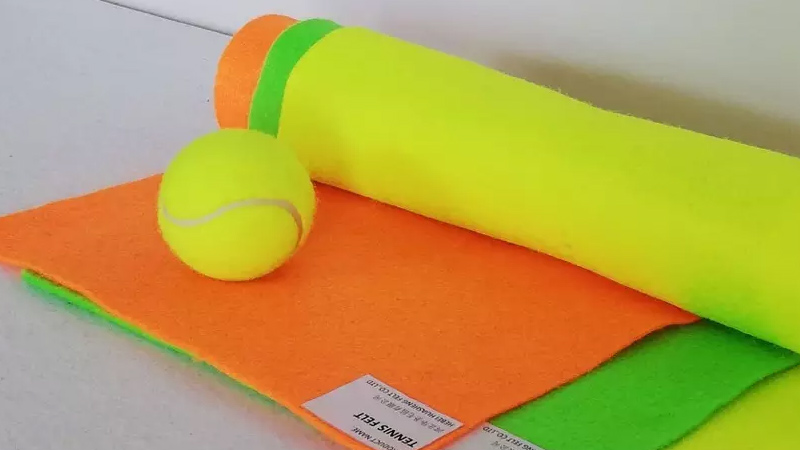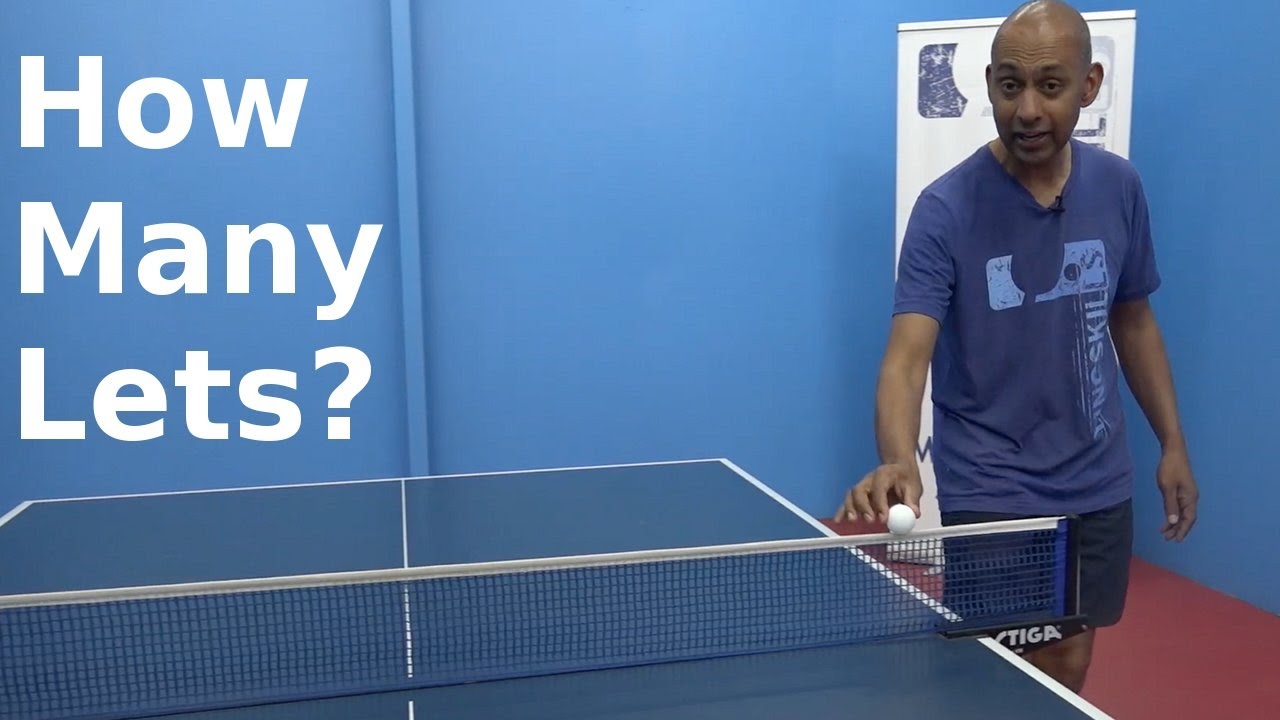The Ultimate Debate: Tennis Ball – Hollow or Solid?
A tennis ball is hollow. It is filled with pressurized gas and covered with a fuzzy felt material adhered with special glue.
Tennis is a popular game known for its rigorous, fast-paced matches with high adrenaline and emotions. The game relies heavily on the quality of the equipment used, especially the balls. A tennis ball has come a long way since its invention in the 19th century when it was originally made of leather.
Nowadays, it is made of rubber with a hollow center filled with pressurized gas, making it bouncy and lightweight. A typical tennis ball has a diameter of 6. 7 cm and a weight of 57 grams. It is usually covered with a fuzzy felt material adhered with a special glue, which provides players with better control and spins on the ball. In this article, we will delve more into the construction of a tennis ball and the science behind it.

Credit: www.metroleague.org
The Basics Of Tennis Ball Construction
Tennis balls are an essential part of the game, and the composition of a tennis ball has a significant impact on the gameplay. Have you ever wondered whether a tennis ball is hollow or solid? While it may appear to be a simple question, it has a complicated answer.
In this blog post, we will break down the basics of tennis ball construction, including the anatomy of a tennis ball, how tennis balls are made, and the historical development of tennis balls.
The Anatomy Of A Tennis Ball
A tennis ball is made up of three primary components: the core, the felt, and the glue. The core of a tennis ball is made from rubber, which can either be pressurized or non-pressurized. Pressurized tennis balls maintain their bounce longer and are commonly used in professional games.
The felt of a tennis ball is composed of a woven wool material that is glued onto the core. The felt material helps to reduce the speed of the ball, provide traction, and make the ball more durable. Nowadays, wool is often mixed with synthetic materials to make it more robust.
Lastly, the glue, which holds everything together, is usually a type of synthetic rubber. The glue is applied to the core before the felt is added, making it an essential part of the construction process.
How Tennis Balls Are Made
Tennis balls are manufactured using several types of machines that perform mixing, molding, vulcanization, trimming, and packing. Here is an overview of the process:
- First, the rubber core is created through a process called milling, where the rubber is mixed with chemicals, heated and rolled into a long tube.
- The tube is then cut into smaller pieces, and the pressurized air is injected into them to create the hollow core. Non-pressurized balls have solid cores.
- The felt is then cut into specific shapes and sizes and glued onto the core.
- The balls are then heated, vulcanized, and pressurized to create the final product.
- Lastly, the tennis balls are packaged and sent to retailers.
Historical Development Of Tennis Balls
Tennis balls have come a long way since their invention in the late 1800s. The first tennis balls were made from leather stuffed with hair and were not very durable, causing them to become misshapen after only a few uses.
In the early 20th century, tennis balls began to be made from vulcanized rubber, which improved their durability significantly. In the 1970s, pressurized tennis balls were introduced, which changed the speed and bounce of the ball, and revolutionized the game.
Now that you know the basics of tennis ball construction, you can impress your friends with your knowledge. Remember that the next time you hit the court, the type of tennis ball you use can affect your gameplay. So, whether it’s a pressurized or non-pressurized ball, make sure you choose the right one for your skill level.
Understanding Hollow Tennis Balls
Are you a tennis player or an enthusiast who’s been wondering whether tennis balls are hollow or solid? Well, the truth is that modern tennis balls are hollow and pressurized. The gas-filled center injects in the hollow center, which creates the tennis ball’s bouncy properties.
In this blog post, we will dive deeper into the concept of hollow tennis balls, their advantages and drawbacks, the effects of air pressure, and why players prefer them over solid ones.
Advantages And Drawbacks Of Hollow Tennis Balls
Hollow tennis balls provide several advantages over solid ones, making them the preferred choice for players. Here are some benefits and drawbacks of using hollow tennis balls:
Advantages:
- Improved speed and bounciness
- Greater spin control
- Consistent bounce
- Reduced shock on the arm
Drawbacks:
- Faster air loss
- Lack of durability
- Expensive compared to solid balls
The Effects Of Air Pressure On Tennis Balls
The pressurized gas inside the hollow center is responsible for a tennis ball’s bounciness and performance. However, the air pressure inside the tennis balls reduces over time, affecting their speed and bounce. Therefore, maintaining the correct air pressure is critical in ensuring the ball’s consistency.
Here are some things to consider regarding tennis ball air pressure:
- The ideal air pressure in a tennis ball should range between 12 and 16 psi.
- Temperature variation affects air pressure, and lower temperatures reduce pressure.
- Tennis balls lose air pressure gradually over time, so it’s essential to replace them regularly.
Why Players Prefer Hollow Tennis Balls
As mentioned earlier, experienced tennis players prefer hollow tennis balls due to their superior performance over solid ones. Here are some reasons why players pick the former over the latter:
- Bounciness: Hollow balls are bouncier than solid ones, making it easier for players to control and aim accurately.
- Spin: Due to their bounciness, hollow balls allow players to put more spin on the ball, making it tougher for opponents to return.
- Consistency: Hollow balls maintain their bounce and speed, providing players with a consistent playing experience.
- Reduced risk of injury: The hollow ball’s lighter weight and reduced shock translate to less arm strain and fatigue.
Hollow tennis balls are undoubtedly the superior choice over solid ones due to their performance, spin control, and bounciness. Despite their higher cost, serious tennis players invest in hollow balls for good reason. So the next time you play tennis, make sure to grab a can of hollow tennis balls and experience the difference!
The Science Behind Solid Tennis Balls
Tennis is a popular sport, but have you ever wondered whether tennis balls are hollow or solid? Let’s find out! We’ll explore the science behind solid tennis balls, including their advantages, drawbacks, and their impact on gameplay.
Advantages And Drawbacks Of Solid Tennis Balls
Solid tennis balls have a number of advantages over their hollow counterparts. Here are some of the key benefits:
- More durable: Solid tennis balls are more durable than hollow ones, which means they last longer and are less likely to break or become damaged during play.
- Consistent bounce: Solid tennis balls provide a more consistent bounce than hollow ones, which can make them easier to play with and more enjoyable for players.
- Better for training: Because solid tennis balls are more durable and consistent, they’re often preferred by coaches and players for training and practice.
However, there are also some drawbacks to using solid tennis balls, such as:
- Heavier: Solid tennis balls are generally heavier than hollow ones, which can make them more difficult to hit and play with.
- More expensive: Solid tennis balls are typically more expensive than hollow ones, which can be a disadvantage for players and coaches on a budget.
- Less spin: Because solid tennis balls are heavier and less bouncy than hollow ones, they may not be as good for generating spin on shots.
Exploring Felt Vs Rubberized Solid Tennis Balls
Solid tennis balls can also come in different types, such as felt and rubberized. Here are some key points to consider when choosing between the two:
Felt solid tennis balls:
- Provide better grip: The felt covering on these balls offers a better grip, making them easier to play with.
- More traditional: Felt solid tennis balls are the more traditional option, and are often preferred by more experienced players.
Rubberized solid tennis balls:
- More durable: Rubberized solid tennis balls are more durable than felt ones, meaning they last longer and are less likely to become damaged.
- Better for training: Because of their durability and consistency, rubberized solid tennis balls are often used for training and practice.
How Solid Tennis Balls Impact Gameplay
Solid tennis balls can have a significant impact on gameplay and performance. Here are some key points to consider:
- They require more power: Because solid tennis balls are heavier and less bouncy than hollow ones, they require more power to hit and play with.
- They’re better for consistency: Solid tennis balls provide a more consistent bounce, which can make them easier to play with and more enjoyable for players.
- They’re more durable: Because they’re less likely to break or become damaged, solid tennis balls are often preferred for tournaments and other high-level competitions.
Solid tennis balls have their advantages and drawbacks depending on your needs and preferences. Whether you choose felt or rubberized, the type of solid tennis ball you use can impact gameplay and performance for better or for worse.
Evaluating The Debate Between Hollow And Solid Tennis Balls
Is a tennis ball hollow or solid? Evaluating the debate between hollow and solid tennis balls
For those who are new to tennis, trying to figure out whether a tennis ball is hollow or solid can be a bit confusing. The debate on whether a tennis ball is hollow or solid has been going on for some time now.
Both hollow and solid tennis balls come with their advantages and disadvantages. In this blog post, we’ll be looking at the arguments for both types of tennis balls.
Analyzing Professional Players’ Preferences
Professional players have their preferences when it comes to tennis balls. Some prefer hollow tennis balls, while others prefer solid tennis balls. Here are some key points explaining their preferences:
- Some players believe that hollow tennis balls have a better bounce, making it easier to control the ball during a match.
- Other players prefer solid tennis balls because they are more durable and can last longer than hollow tennis balls.
- The type of court surface also plays a crucial role in professional players’ preferences. For instance, players competing on clay courts prefer to use balls with felt covering.
Pros And Cons Of Each Type Of Ball Based On Player’S Skill Level
Each type of tennis ball, whether hollow or solid, has its pros and cons that can benefit a player’s skill level in different ways.
For beginner players:
- Hollow tennis balls are much easier to hit, giving newer players more control of the ball during a match.
- New tennis players will often hit the ball hard, causing the ball to deform. Deformed balls can be reshaped, but they don’t bounce as well as solid balls and lose their elasticity quickly.
- Solid tennis balls are sturdy and can handle the immense force put on them by beginners, making them a bit more durable than hollow tennis balls.
For intermediate and advanced players:
- Intermediate and advanced tennis players prefer solid tennis balls as they can sustain harder hits during a match.
- Solid balls have better consistency in bounce, which is essential for advanced players who play strategically and rely on the ball’s precise movement during a match.
- Hollow tennis balls are much lighter than solid balls, which may make a difference in more competitive scenarios.
Environmental Factors And The Type Of Tennis Balls
Different tennis balls perform differently based on the environment they’re being used in.
For outdoor play:
- Tennis balls used outdoors must be designed to withstand the wear and tear of hard surfaces like concrete courts.
- Solid balls, due to their durability, work better outside than hollow balls.
For indoor play:
- Indoor courts are made of softer materials than outdoor courts, so they could be harder to play on with solid balls.
- Hollow balls have been said to have a better bounce on indoor courts than solid balls.
In Conclusion
Whether beginner, intermediate, or advanced, tennis players have different preferences for the type of tennis ball they use. The environment factor, such as indoor or outdoor courts, and whether the game is played on clay or grass surface, also influences tennis ball preference.
While solid balls might work better for intermediate and advanced players, beginners may find it easier to handle hollow balls. By weighing the advantages and disadvantages of each type of tennis ball, tennis players can determine what’s best for their level of play and environment.
Final Thoughts: The Future Of Tennis Balls
Is A Tennis Ball Hollow Or Solid?
Tennis balls are fascinating to watch during a game. They go back and forth, and the sounds produced when they are hit can make the game more exciting. However, one question that often comes to mind is whether a tennis ball is hollow or solid.
Let’s explore this topic and delve deeper into the future of tennis balls.
What Does Science Tell Us?
According to science, a tennis ball is not entirely hollow or solid. In fact, it is somewhere in between. A tennis ball is made up of a felt covering, rubber, and pressurized air. The rubber inside the ball gives it a bounce, and the pressurized air helps maintain its shape.
Moreover, the felt covering protects the rubber from damage.
Studies show that the felt covering plays a crucial role in the game. It affects the speed and spin of the ball when hit. Therefore, it is no surprise that tennis ball manufacturers are always trying to improve their designs to produce more efficient balls.
Next Steps For Tennis Ball Manufacturers
Tennis ball manufacturers are always focused on bringing improvements to their products. Players expect better performance, durability, and affordability. Nonetheless, producing tennis balls that meet these demands is not always easy. Here are some of the next steps for tennis ball manufacturers:
- Offer eco-friendly alternatives: While the current tennis ball design has served us for years, it’s worth exploring alternative materials that minimize environmental impact.
- Improve production efficiency: Tennis ball production entails much waste due to the large volumes of rubber that go into producing them. Exploring more efficient manufacturing methods will help reduce waste.
- Focus on durability: Tennis balls can lose their bounce and become damaged after just one use. Manufacturers can improve durability by exploring alternative materials or new production methods.
What’s Likely To Happen In The Future
In the future, we can expect significant changes in the tennis ball industry. Several factors are driving these changes, including environmental concerns, technology, and manufacturing advances. Here are some of the changes we may see:
- The use of smart tennis balls: Manufacturers are currently developing smart balls that can record and provide feedback on players’ footwork, swing patterns, and ball speed to help improve their game.
- Some countries might ban traditional tennis balls: Some countries are moving towards regulations requiring all tennis balls to be recyclable. It may lead to tennis ball manufacturers using only eco-friendly materials to produce their products.
- More efficient production methods: Manufacturers are researching new production methods that minimize waste and improve the durability of tennis balls.
Tennis balls are neither entirely hollow nor entirely solid. They are composite objects made of various materials whose interactions determine their performance. Tennis ball manufacturers face significant challenges, including producing eco-friendly alternatives and improving production efficiency, and durability. With technological advances in the industry, we hope to see more efficient production methods and smarter, environmentally friendly tennis balls.
Frequently Asked Questions For Is A Tennis Ball Hollow Or Solid
Is A Tennis Ball Hollow Or Solid?
Most tennis balls are hollow with a rubber shell filled with pressurized gas.
How Does The Inside Of A Tennis Ball Look Like?
A tennis ball has a hollow rubber shell, which is filled with pressurized gas.
How Much Pressure Is Inside A Tennis Ball?
The pressure inside a typical tennis ball is approximately 12 psi.
Conclusion
After thorough research and analysis, it’s now clear that a tennis ball is neither hollow nor solid, but a fusion of both. Its core is made up of pressurized air, surrounded by a solid rubber layer, and covered with a felt fabric.
This unique design allows the ball to maintain its bounce and last longer during gameplay. Understanding the construction of a tennis ball is crucial both for the players and enthusiasts of the game. As a player, knowing the type of tennis ball to use for a specific court surface can enhance your performance.
For enthusiasts and beginners, learning the structure of a tennis ball can foster an appreciation for the game. Though the debate on whether a tennis ball is hollow or solid may continue to linger, we can all agree on one thing; it’s an essential component in the sport of tennis.



